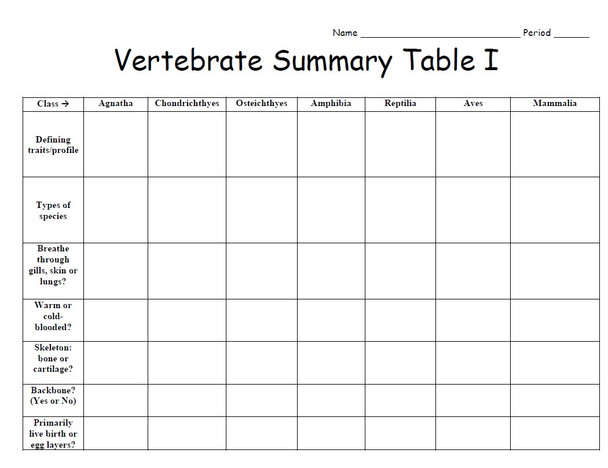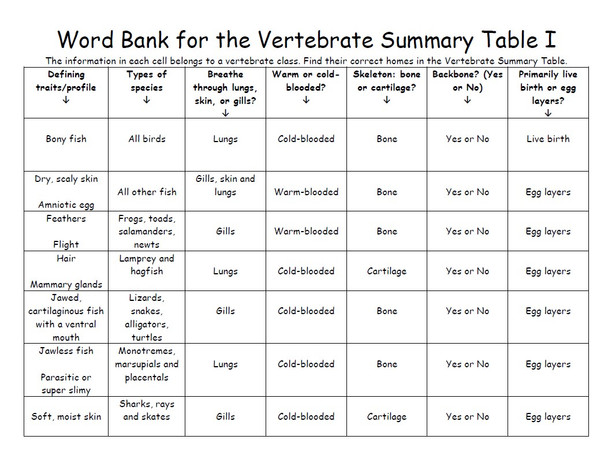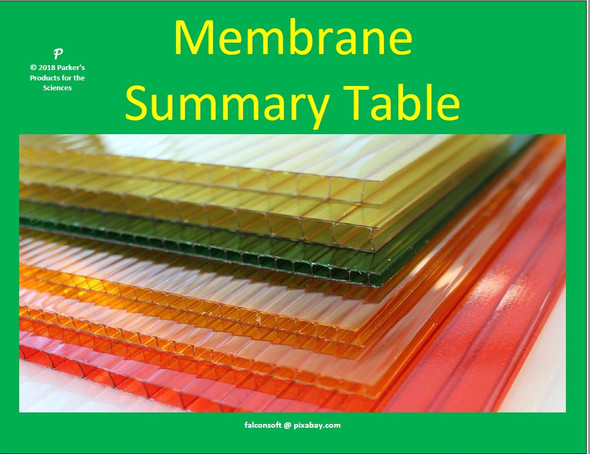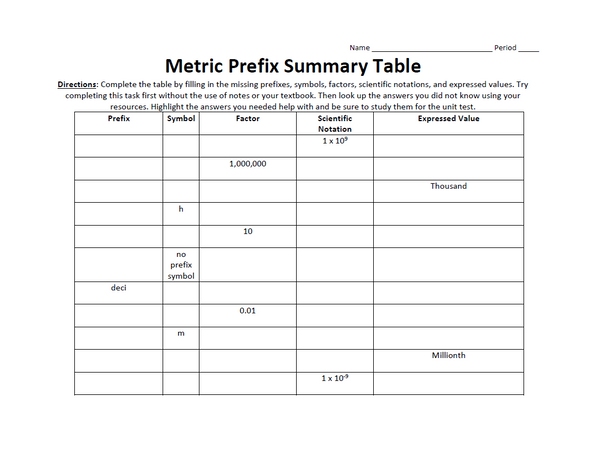Description
This listing features two one-page Vertebrate Summary Tables (I and IA) that summarizes the key characteristics scientists use to classify and contrast the seven different classes of vertebrates. The seven classes of vertebrate students in this activity will summarize - Agnatha (Jawless fish), Chondrichthyes (Cartilaginous fish), Osteichthyes (Bony fish), Amphibia, Reptilia, Aves (Birds), and Mammalia.
Each Vertebrate Summary Table will offer biology students a handy one-sided large landscape-oriented table. The table sums up the defining traits (profile), types of species, method of breathing (through the skin, with lungs, or with gills), warm or cold-blooded status, type of skeleton (bony or cartilaginous), backbone or no backbone status, and primarily egg-layers or live births classification for each of the seven classes of vertebrates. The tables serve as ideal study guides!
The Vertebrate Summary Table I is the easier of the two versions. Teachers can use the version I as a modification for students with an IEP, and the IA version as the standard version for the rest of the students. Teachers have the other option of assigning Table I to the mainstream students, and version IA to the advanced students.
In the sophisticated table (IA), students will determine whether the vertebrates in question are primarily viviparous or oviparous (instead of egg-layers or live births). Learners will identify the number of heart chambers (instead of the presence or absence of a backbone). Capable students will classify the representatives in each class as endotherms or ectotherms (instead of warm-blooded or cold-blooded).
I also included a word bank for each table version that offers a complete set of answer choices for all seven categories. This listing also comes with a full key for each table, with the answers in bold, red font.
This lesson is a PDF file. Teachers will be able to edit this resource upon conversion to Microsoft Word using an Adobe Acrobat Reader app.
I also offer a Vertebrate Tournament Bracket Challenge!
Hopefully, this practical activity will serve you well. I joined Amped Up! Learning as an author with seventeen years of publishing experience through several international science supply corporations.




















